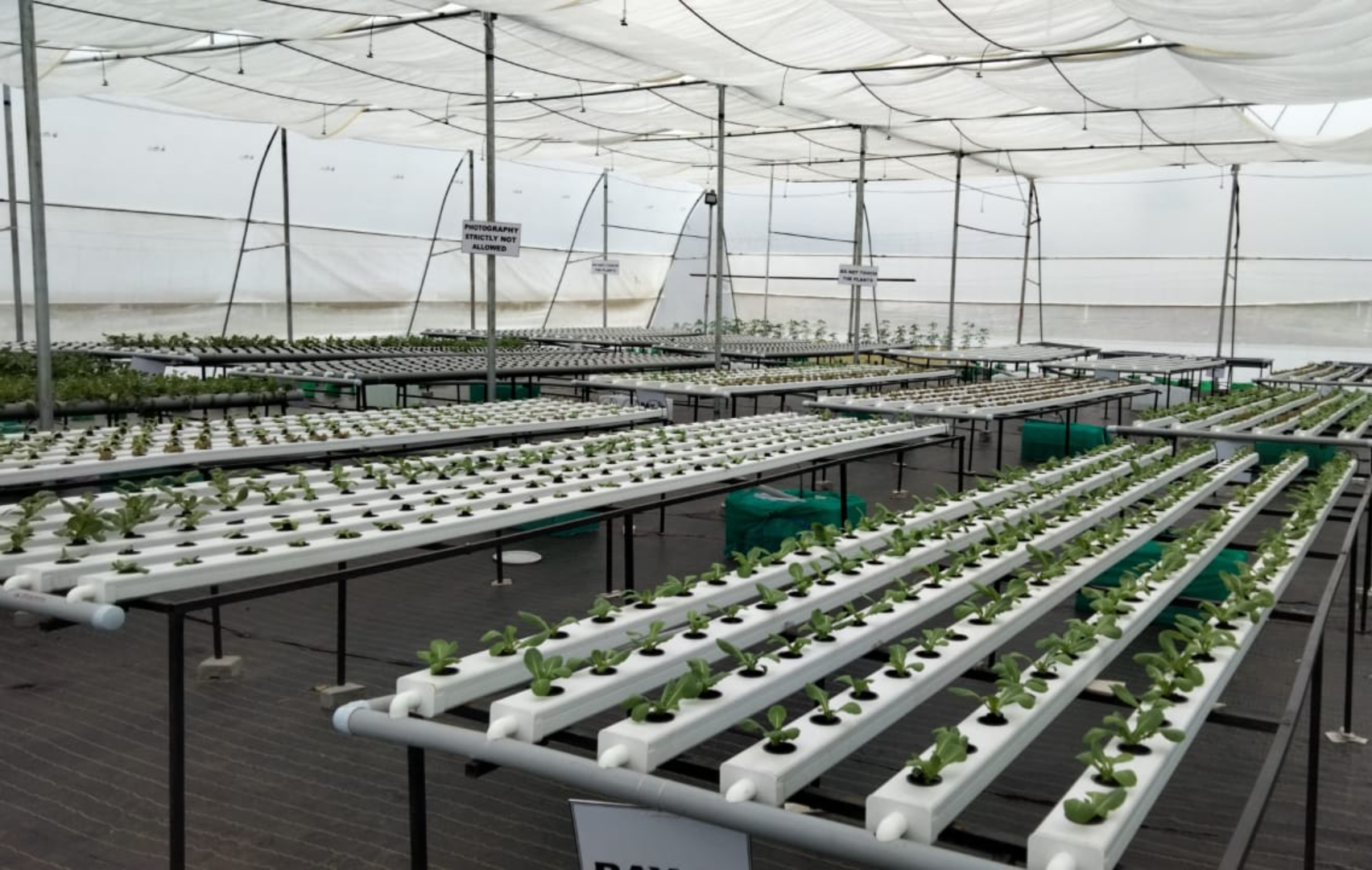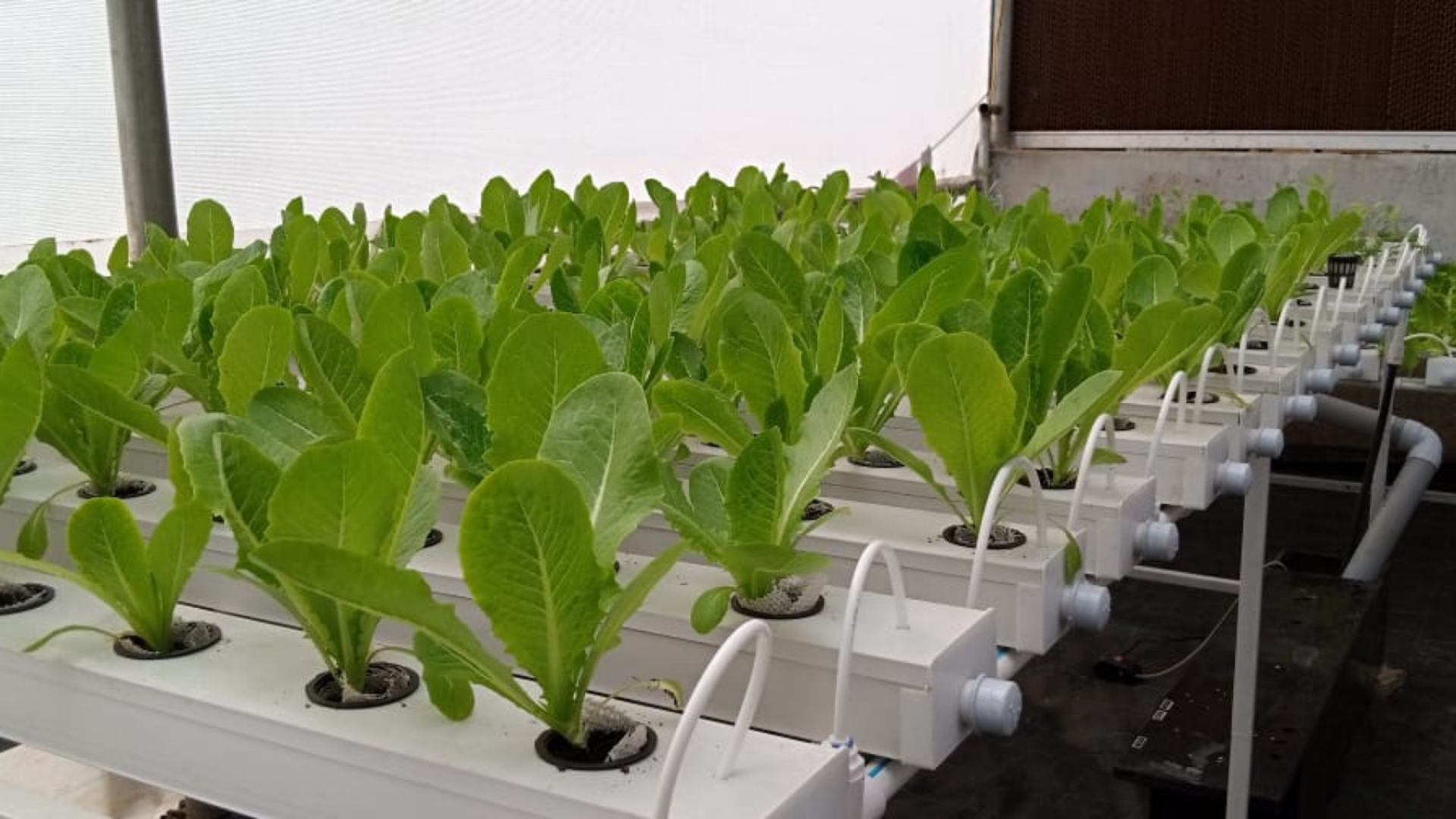A Naturally Ventilated Poly House with an A-Frame N.F.T. (Nutrient Film Technique) System is an agricultural setup that combines controlled environment technology with hydroponics for plant cultivation. Here's a brief overview:
1. *Naturally Ventilated Poly House*: This refers to a greenhouse or polytunnel structure made of a translucent or transparent material, such as polyethylene or polycarbonate.It's designed to allow natural ventilation, meaning it has openings or vents that enable airflow and temperature control without the need for mechanical ventilation systems. This helps maintain a favorable climate for plant growth.
2. *A-Frame N.F.T. System*: The A-Frame N.F.T. system is a hydroponic growing method where plants are grown in channels or troughs in the shape of an "A." These channels are typically made of materials like PVC or plastic, and a thin film of nutrient-rich water flows over the plant roots, providing them with essential nutrients. This system can be placed within the naturally ventilated poly house.
Key Benefits:

A Naturally Ventilated Poly House with a Flatbed N.F.T. (Nutrient Film Technique) System combines greenhouse technology with hydroponics for efficient plant cultivation. Here's a concise overview: Here's a brief overview:
Naturally Ventilated Poly House: This refers to a greenhouse constructed from materials like polyethylene or polycarbonate, designed to allow natural airflow and temperature regulation. It provides a controlled environment for plant growth without the need for mechanical ventilation.
Flatbed N.F.T. System: The Flatbed N.F.T. system is a hydroponic method where plants are grown in horizontal channels or troughs filled with a thin film of nutrient-rich water. This system can be integrated within the naturally ventilated poly house.
Key Benefits:

Fan & Pad Poly House with A Frame N.F.T. System A Fan & Pad Poly House with an A-Frame N.F.T. (Nutrient Film Technique) System is a modern agricultural setup that combines controlled environment technology with hydroponic plant cultivation.
Naturally Ventilated Poly House: This refers to a greenhouse constructed from materials like polyethylene or polycarbonate, designed to allow natural airflow and temperature regulation. It provides a controlled environment for plant growth without the need for mechanical ventilation.
Flatbed N.F.T. System: The Flatbed N.F.T. system is a hydroponic method where plants are grown in horizontal channels or troughs filled with a thin film of nutrient-rich water. This system can be integrated within the naturally ventilated poly house.
Key Benefits:

Poly House with fan and pad controlled. In this system, Cooling pads are mounted in one end wall or sidewall of the Polyhouse. They are supplied with water from a pipe above the pads and excess water is collected in a gutter at the bottom. Air drawn through the wet pads by slow axial fans mounted in the opposite end wall or sidewall is saturated and cools the greenhouse.Poly House with fan and pad controlled is used in those systems where high efficiency cooling is required. It can be used for many different cooling purposes but is particularly suitable for cooling of greenhouses where higher air velocity is required.
Poly House with Cellulose Pads to acquire proper CFM of air movement per sq.ft of area will be provided. Even water delivery through distribution pipe will be ensured. Slow water contamination and efficient water flow, to achieve temperature 10-12oC +2 oC below ambient temperature @ 45% RH.Evaporative cooling, which uses the heat in the air to evaporate water from plants and other wetted surfaces can be used to cool the greenhouse as much as 10 to 12oC below the outside temperature. Although evaporative cooling is most effective in dryer climates, such as suitable for North, Central and west part of India.
The heat that is needed for the evaporation is taken from the air itself. The air that leaves the pad is therefore cooled and humidified simultaneously without any external energy supply for the evaporation process. This type of Green House is suitable for the Secondary Hardening of Banana, Vegetable seedling & growing Strawberry cultvation etc.

An Indoor Vertical Flatbed N.F.T. System with Grow Lights is a compact and efficient way to grow plants indoors. It uses a vertical design with horizontal troughs to hold plants. The Nutrient Film Technique (N.F.T.) supplies plant roots with a continuous flow of nutrient-rich water. LED grow lights provide artificial light for photosynthesis. A pump circulates the nutrient solution, and a reservoir collects excess. Benefits include space efficiency, year-round growth, and precise control over growing conditions, but it requires careful monitoring and expertise in hydroponics and lighting.
